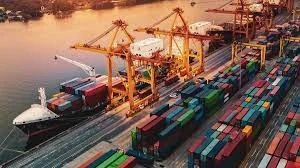In today’s interconnected global economy, the Philippines plays a significant role in international trade, both as an importer and an exporter. Let’s explore the major import and export sectors, and trade partners and discover how businesses can benefit from accurate and reliable import-export data provided by Import Globals.
Major Imports of The Philippines:
The Philippines import data from 2021 reveals that the county imported goods valued at $145B. Some of its major imports included:
Integrated Circuits ($14B):
Among the Philippines’ top imports are integrated circuits, also known as semiconductors. These electronic components serve as the building blocks for various devices, including computers, smartphones, and other advanced technological systems.
These imports play a crucial role in the local assembly, production, and export of electronic products contributing significantly to the country’s export revenue.
Refined Petroleum ($9.04B):
Another significant import for the Philippines is refined petroleum products. The Philippines is heavily reliant on transportation and energy and the demand for fuel is substantial. Refined petroleum fuels in various sectors, including transportation, manufacturing, and electricity generation. The importation of refined petroleum helps meet the country’s energy needs, supporting economic activities.
Office Machine Parts ($3.11B):
Office machine parts are vital imports for the Philippines, enabling the maintenance and upkeep of modern workplaces. These parts encompass a wide range of equipment, such as printers, scanners, copiers, and computers. The country’s growing business process outsourcing (BPO) industry coupled with the expansion of other service sectors has fueled the demand for office machines.
By importing the necessary parts, the Philippines ensures the smooth functioning of its service-based economy and sustains its position as a leading outsourcing destination.
Cars ($2.77B):
With a rising middle class and increasing urbanization, the demand for automobiles in the Philippines has witnessed a notable surge. As a result, the importation of cars has become a significant component of the country’s trade.
While the Philippines has also been encouraging local automotive manufacturing, imports continue to play a crucial role in meeting the demand for vehicles and expanding consumer choices.
Import partner countries of The Philippines are:
- China ($48.9B)
- Japan ($10.4B)
- South Korea ($9.23B)
- Indonesia ($9.21B)
- United States ($8.16B).
Major Exports of The Philippines:
The Philippines exported goods valued at $97.3B according to the Philippines export data by OEC. Major exports of The Philippines are listed below.
Integrated Circuits ($27.5B):
Integrated circuits or semiconductors are the leading export product of the Philippines. These electronic components serve as the backbone of numerous high-tech devices including computers, smartphones, and appliances.
The export of integrated circuits not only generates substantial revenue but also contributes to the growth of the domestic electronics industry and boosts the country’s overall technological capabilities.
Insulated Wire ($3.05B):
Insulated wire is another notable export of the Philippines. It is used in telecommunications, power transmission, and construction. The Philippines’ production of insulated wire benefits from the country’s abundant copper resources and skilled labor force.
By exporting insulated wire, the Philippines not only contributes to the global supply chain but also supports infrastructure development both domestically and internationally.
Electrical Transformers ($2.49B):
Electrical transformers are essential components for power transmission and distribution systems. The Philippines has emerged as a significant exporter of electrical transformers, catering to both domestic and international markets.
With the increasing demand for electricity and the expansion of renewable energy sources, the export of electrical transformers becomes crucial in ensuring efficient power infrastructure.
Semiconductor Devices ($2.44B):
Semiconductor devices which include diodes, transistors, and other electronic components are also among the top exports for the Philippines. These devices are useful for a wide range of electronic applications including telecommunications, consumer electronics, and automotive systems.
Export partner countries of The Philippines are:
- China ($15.1B)
- United States ($13.3B)
- Japan ($11.5B)
- Hong Kong ($11.4B)
- Singapore ($6.19B)
Conclusion:
According to the Economic Complexity Index (ECI), the Philippines was the 36th most complex economy in the world in terms of GDP (current US dollars), the 41st in total exports, the 33rd in total imports, the 121st in GDP per capita (current US dollars), and the 37th in total imports in 2021.
The Philippines embraces imports to meet domestic demands while its thriving export industries contribute to the global marketplace.
Through partnerships with countries around the world, the Philippines continues to expand its trade horizons, fostering economic prosperity and cultural exchange. If you are involved in The Philippines import or export business, then real-time data is important for sustainable business growth. Get the latest insights about The Philippines import or export data from Import Globals which is a renowned data provider online.


















